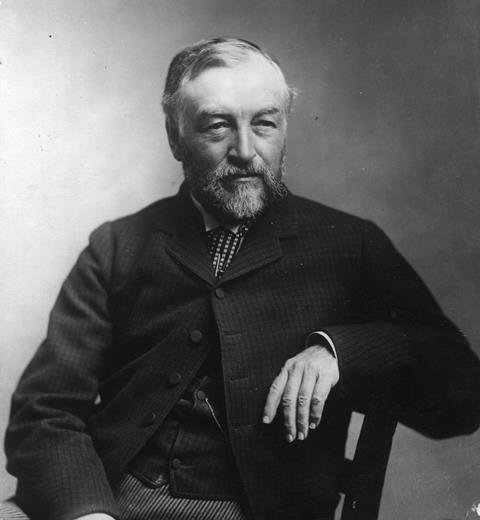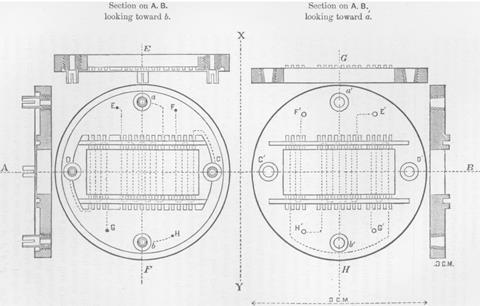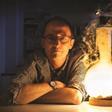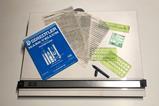Mapping a spectrum of developments

Ernest Rutherford’s quip that science is either physics or stamp collecting has to be one of the silliest statements ever. Aside from the fact that it is semi-apocryphal, it sets up a false dichotomy, as if physicists never had to collect reams of seemingly pointless data.
Assuming that Rutherford wasn’t just trying to wind up his audience, you wonder whether he would have considered William Herschel’s measurement of the temperature of a sunbeam split into its component colours as profound or trivial. But Hershel’s observation that the temperature rose when he placed a thermometer just beyond the red light of his ‘rainbow’ is a remarkable moment in our intellectual history; it would lead to the great unifying theories that emerged in the second half of the 19th century.
Thermometers being somewhat insensitive, extending Herschel’s work required a better instrument. Macedonio Melloni, an Italian scientist and political troublemaker, would develop the thermopile based on the Seebeck effect, showing just how widespread this invisible ‘calorific’ radiation was. These experiments were so astonishing that demand for thermopiles exploded. The instrument-maker Daniel Ruhmkorff in Paris, for example, made the thermopiles that John Tyndall used at the Royal Institution as he extended Melloni’s work to liquids and gases.
In a beautiful study in 1864, Tyndall measured the power output of a hot platinum wire. Placing the wire at the focus of a parabolic mirror he used lenses and a prism made of rock salt to focus the light onto his thermopile; the wire not only got hotter and changed colour, but it became brighter; the total power output increased, much of it in the form of invisible ‘radiant heat’. The Carinthian physicist Josef Stefan put these results on a quantitative footing in 1877, showing that the power output went as the fourth power of the temperature, which made it possible to estimate the temperature of the surface of the sun. Ludwig Boltzmann gave this relationship a theoretical basis, deriving the relation from fundamental thermodynamics.
But when it came to measuring the full spectrum, whether from the sun or from a hot object, there was a problem. Several scientists had pointed out that dispersing the light using a prism was problematic – every material absorbed light somewhere in the spectrum.
Time for a new idea
A new approach was developed by Samuel Pierpoint Langley, an astronomer who had been appointed to build up the observatory at the US Naval Academy. His flair for organisation and fundraising soon led to his appointment at the Allegheny Observatory in Pittsburgh. Langley had enormous energy and was hugely creative. He found an industrialist benefactor to kickstart the work, but once he had the telescope needed to measure the precise positions of stars he branched out into timekeeping, first for trains running through Pittsburgh and then further afield using the telegraph. His signals came to be known as the Allegheny Time System. They also provided the funding to keep his observatory going.
But his key interest was the sun. He recorded sunspots and tried to measure the solar spectrum as far into the infrared as he could. Dissatisfied with his results, he started to cast around for a better instrument. Reasoning that resistance of a metal varied with temperature, he imagined two strips of metal placed side by side, one of which was exposed to the light, the other kept in the dark as a control. The strips would form two arms of a Wheatstone resistance bridge, the resistance determined from the null point of a galvanometer.

Langley spent a year testing out his idea with different materials including gold foils (too irregular after beating to the required thinness), iron strips (tending to rust) and metallic films deposited on glass (heat loss through the glass was too great). Eventually he found that strips of platinum, steel or palladium rolled to a thickness of 2–10mm and blackened with soot gave almost instantaneous readings; he could detect changes as small as a millionth of a degree Celsius. Using his bolometer, Langley measured the temperature of the moon and mapped out the spectrum of the sun. Crucially he was the first to characterise the spectral absorption of infrared light by water vapour and carbon dioxide that Tyndall had reported 20 years before. These measurements would make it possible for Svante Arrhenius to make the first prediction of climate sensitivity.
Today, bolometers have been replaced in our spectrometers by electronic detectors, and Langley is mostly remembered for his contributions to the development of airplanes, his focus after he left Pittsburgh.
In an age when data mining has become one of the central pursuits across science, it is clear that whether you collect stamps, binding constants, spectra or temperatures, the systematic accumulation of data makes it possible to see patterns that will eventually be systematised and modelled in ways that eventually make it into our textbooks. If Rutherford really did sneer about collectors, he was just wrong.

















1 Reader's comment